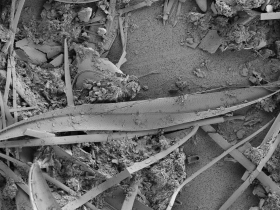Effect of Light Intensity and Light Quality on Diatom Behavioral and Physiological Photoprotection
Effect of Light Intensity and Light Quality on Diatom Behavioral and Physiological Photoprotection
Prins A., Deleris P., Hubas C. and Jesus B. (2020) Effect of Light Intensity and Light Quality on Diatom Behavioral and Physiological Photoprotection. Front. Mar. Sci. 7:203. https://doi.org/10.3389/fmars.2020.00203
We all know that some plants prefer shade while others thrive in full sun. This is because photosynthetic organisms must constantly adapt to changing light conditions. Some plants are thus adapted to more or less strong irradiances. In some marine biofilms, diatoms can regulate the amount of light reaching their photosystems by various mechanisms, either behavioural (migration or positive phototropism depending on the case and the species considered) or physiological (modification of pigment compositions). These mechanisms are well known in diatoms and have been the subject of numerous experimental studies, all of which modulate the total amount of light supplied to the algae. However, not all electromagnetic radiation is useful for photosynthesis and does not provide the same amount of energy. Similarly, certain colours, certain frequencies, may be more or less available depending on environmental conditions, latitude, time of day, depth, etc. We therefore tested how three different colours (blue, green and red) and two light intensities (low light, LL at 210 μmol.photons/m2/s and high light, HL at 800 μmol.photons/m2/s) influenced the photo-adaptation mechanisms. Our results showed that, in diatom biofilms, light stress is wavelength-dependent and induces upward or downward migrations to position the microphytobenthic diatoms at their optimal depth.
BOREA contact: Cédric Hubas, cedric.hubas@mnhn.fr



